Discover how a bimodal integration strategy can address the major data management challenges facing your organization today.
Get the Report →Create HCL Domino Dashboards in Bold BI
Use CData Connect Server to create a virtual SQL Server Database for HCL Domino data to build custom dashboards in Bold BI.
Bold BI allows you to create, share, and collaborate on interactive BI dashboards. When paired with CData Connect Server, you get instant access to HCL Domino data for visualizations, dashboards, and more. This article shows how to create a virtual database for HCL Domino and build reports from HCL Domino data in Bold BI.
CData Connect Server provides a pure SQL Server interface for HCL Domino, allowing you to easily build reports from live HCL Domino data in Bold BI — without replicating the data to a natively supported database. As you build visualizations, Bold BI generates SQL queries to gather data. Using optimized data processing out of the box, CData Connect Server pushes all supported SQL operations (filters, JOINs, etc) directly to HCL Domino, leveraging server-side processing to quickly return the requested HCL Domino data.
Create a Virtual SQL Server Database for HCL Domino Data
CData Connect Server uses a straightforward, point-and-click interface to connect to data sources and generate APIs.
- Login to Connect Server and click Connections.
![Adding a connection]()
- Select "HCL Domino" from Available Data Sources.
-
Enter the necessary authentication properties to connect to HCL Domino.
Prerequisites
The connector requires the Proton component to be installed. Normally, Proton is distributed as part of the AppDev pack. See the HCL documentation for instructions on acquiring and installing Proton or the AppDev pack.
Once the Proton service is installed and running, you will also need to create a user account and download its Internet certificate. This certificate can be used to set the connector certificate connection properties.
Authenticating to Domino
- Server: The name or IP address of the server running Domino with the Proton service.
- Port: The port number that the Proton service is listening on.
- Database: The name of the database file, including the .nsf extension.
- SSLClientCertType: This must match the format of the certificate file. Typically this will be either PEMKEY_FILE for .pem certificates or PFXFILE for .pfx certificates.
- SSLClientCert: The path to the certificate file.
- SSLServerCert: This can be set to (*) if you trust the server. This is usually the case, but if you want to perform SSL validation, you may provide a certificate or thumbprint instead. See the documentation for SSLServerCert for details.
Additional Server Configuration
The connector supports querying Domino views if any are defined. Before views can be queried by the connector they must be registered with the design catalog.
Please refer to the Catalog Administration section of the AppDev pack documentation for details on how to do this.
![Configuring a connection (SQL Server is shown).]()
- Click Save Changes
- Click Privileges -> Add and add the new user (or an existing user) with the appropriate permissions.
With the virtual database created, you are ready to connect to HCL Domino data from Bold BI.
Visualize Live HCL Domino Data in Bold BI
The steps below outline connecting to CData Connect Server from Bold BI to create a new HCL Domino data source and build a simple visualization from the data.
- Log into your Bold BI instance, click the data sources tab, create a new data source, and choose the SQL Server connector.
- Choose the basic configuration and set the connection properties:
- Name: Name your connection
- Server name: Your Connect Server instance (CONNECT_SERVER_URL)
- Port: 1433
- Username: Your Connect Server username
- Password: Your Connect Server password
- Mode: Choose Live to query HCL Domino on-demand or choose Extract to load the data into Bold BI
- Database: Choose the database you created from the drop-down menu (dominodb)
- Click Connect
- Select the table to visualize and drag it onto the workspace.
- Select a visualization style and add it to the report.
- Click the gear icon for the visualization to configure the visualization properties and assign columns to the visualization.
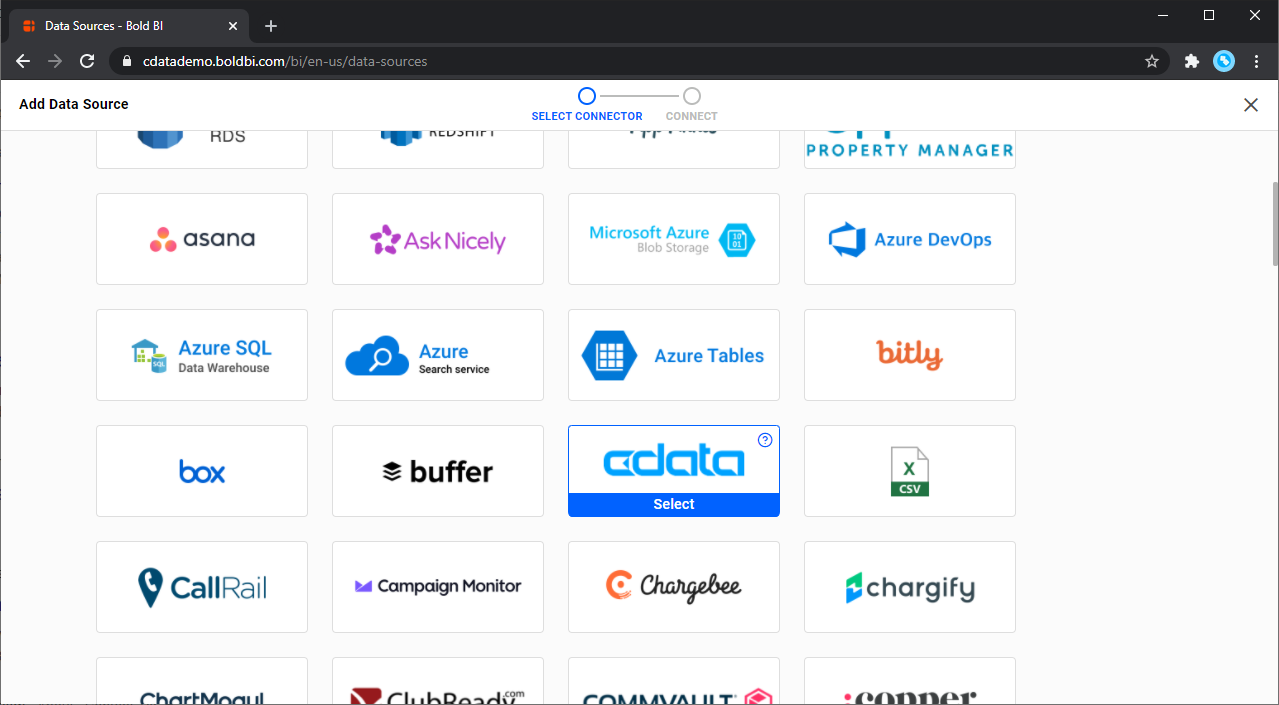
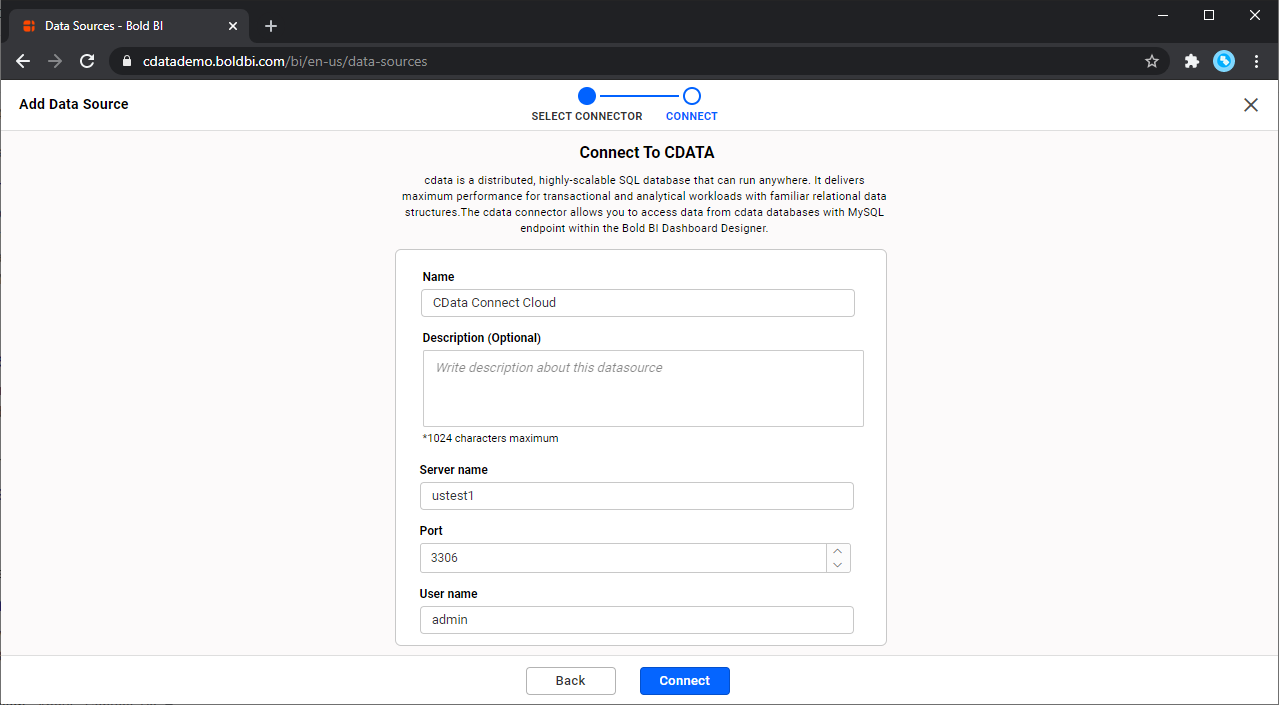
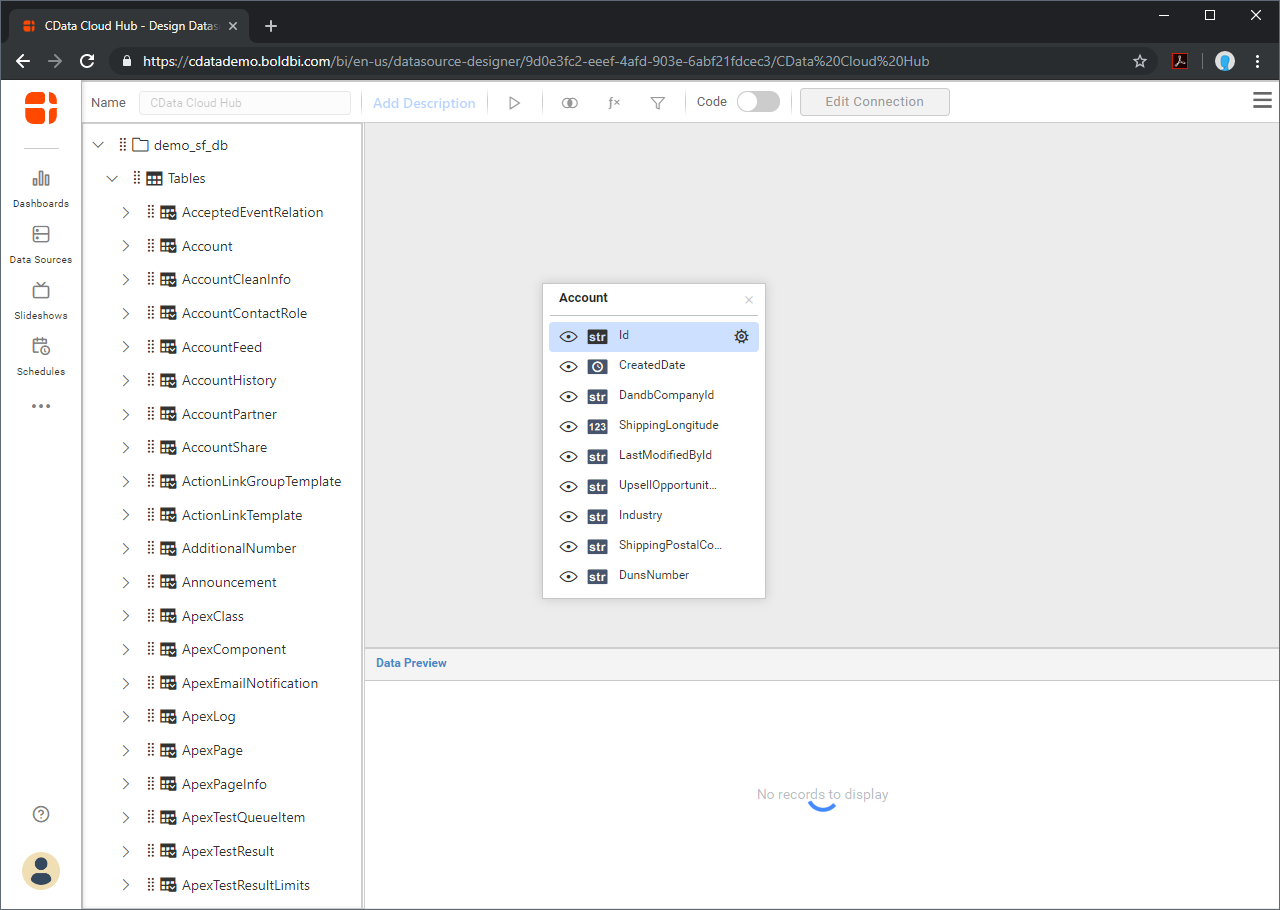
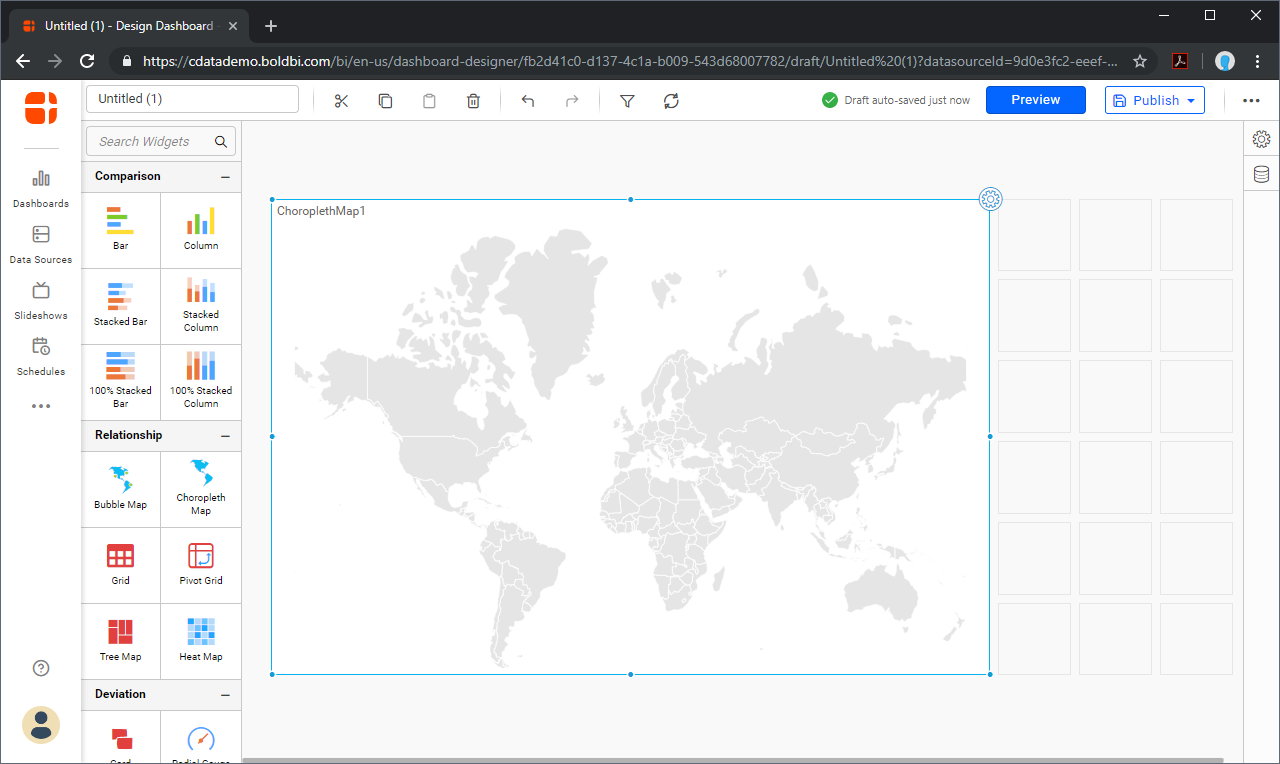
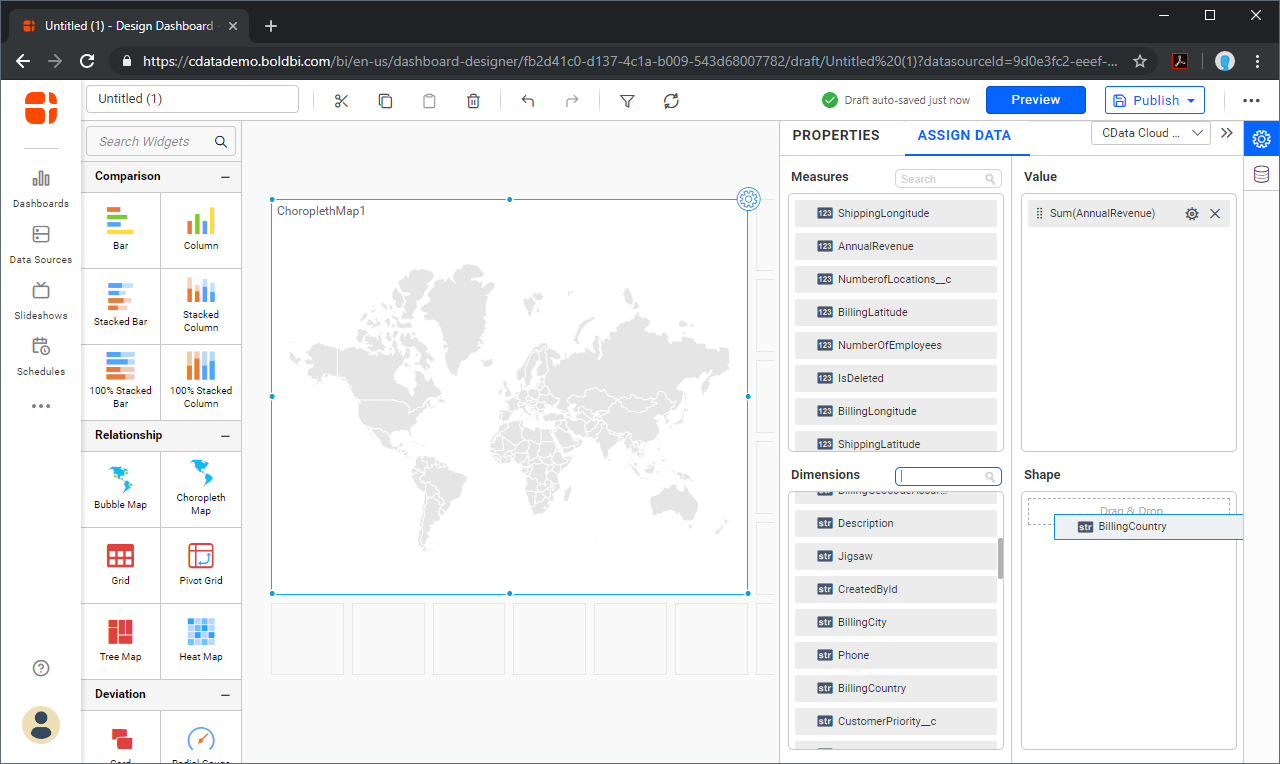
SQL Access to HCL Domino Data from Applications
Now you have a direct connection to live HCL Domino data from your Bold BI workbook. You can create more data sources and new visualizations, build reports, and more — all without replicating HCL Domino data.
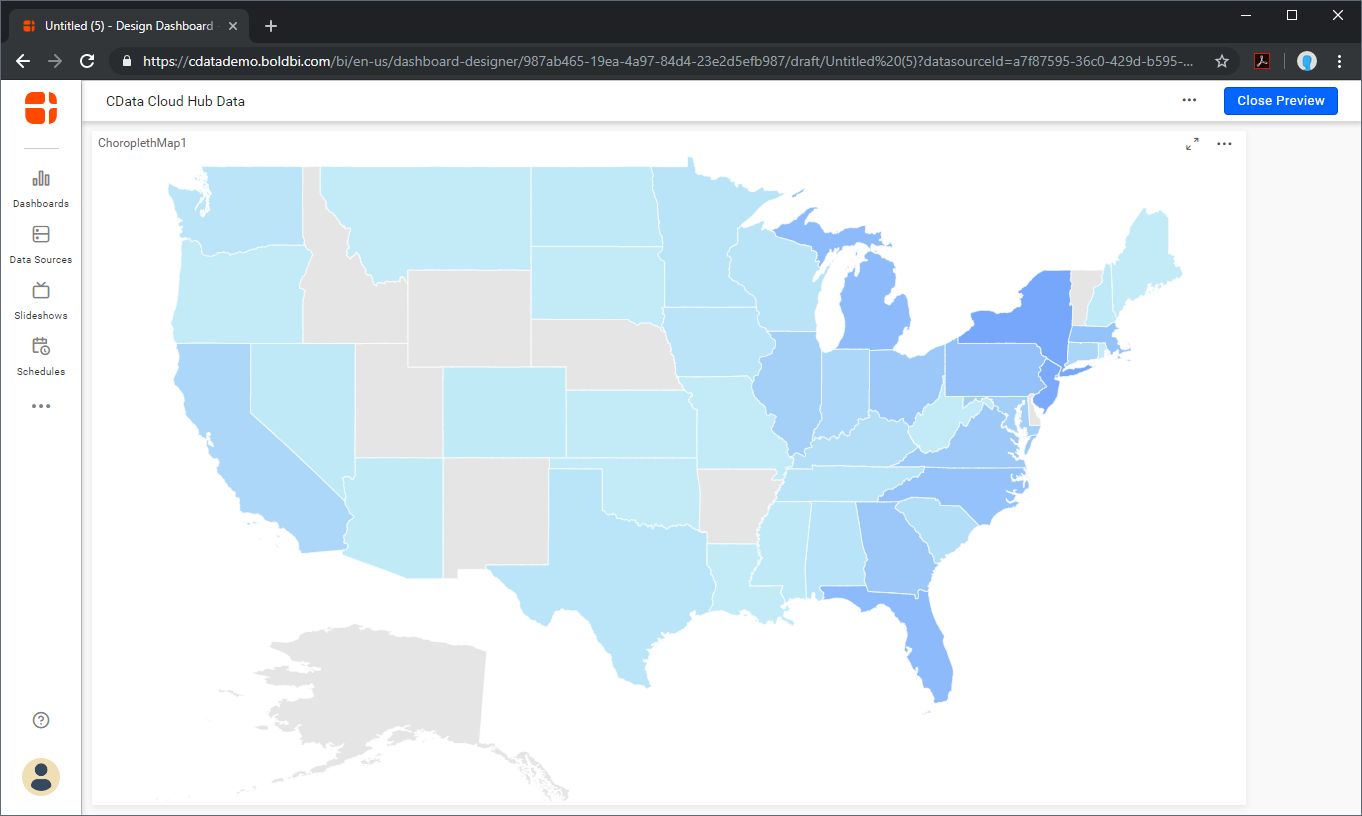
To get SQL data access to 200+ SaaS, Big Data, and NoSQL sources directly from your applications, see the CData Connect page.








